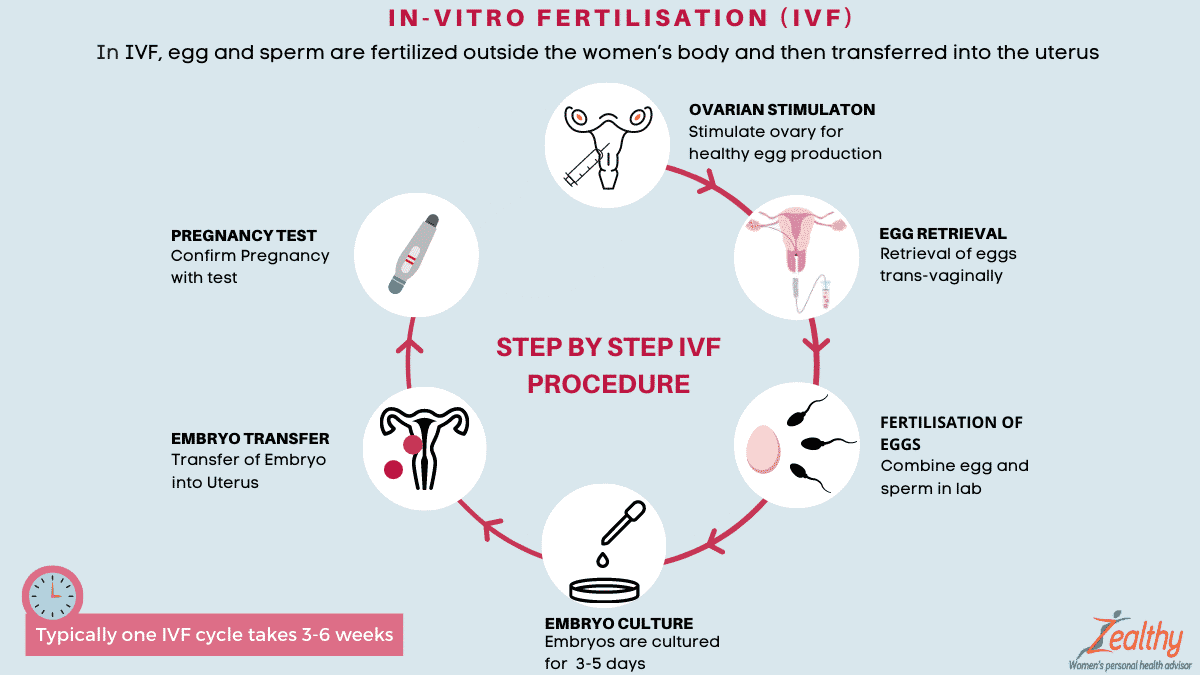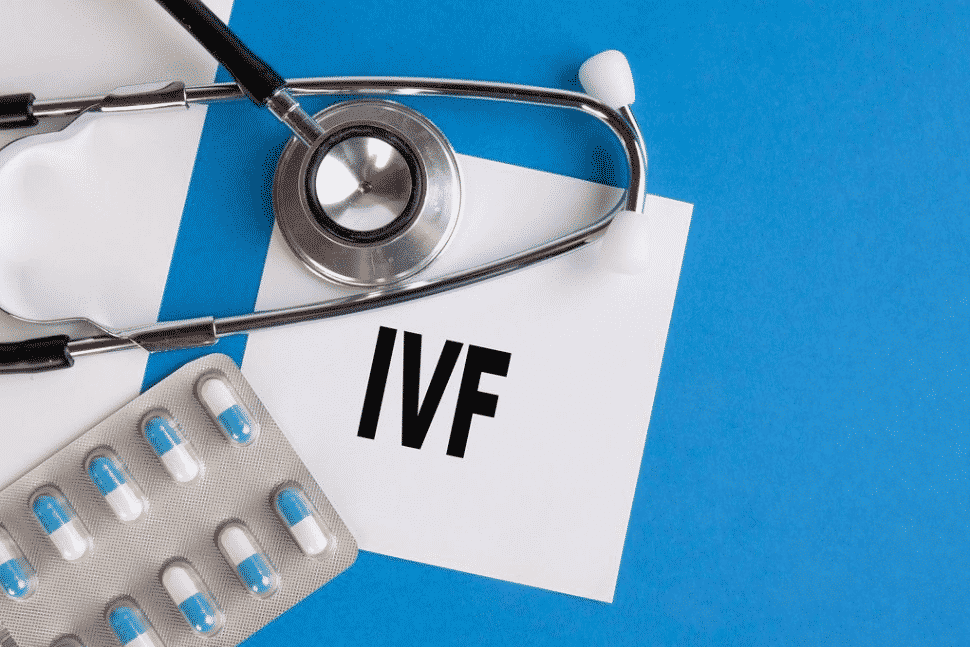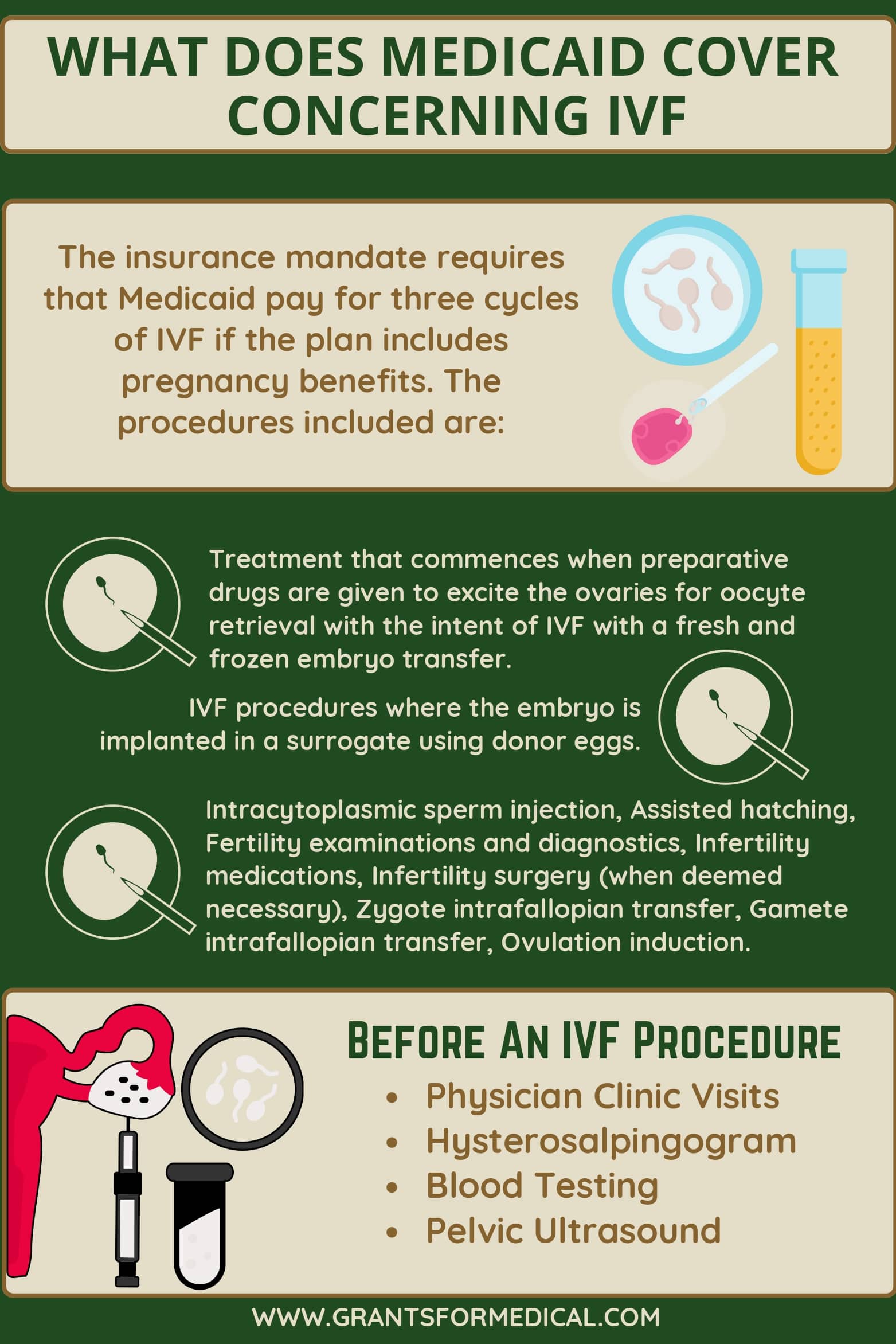Does Medicaid Cover IVF in New York? Your Guide to Fertility Options
Starting a family can feel like a dream come true, but for many, the road to parenthood isn’t always straightforward. If you’re in New York and relying on Medicaid, you might be wondering whether it can help cover in vitro fertilization (IVF)—a pricey but often life-changing fertility treatment. The short answer? No, Medicaid in New York doesn’t cover IVF itself. But don’t lose hope just yet—there’s more to the story, and I’m here to walk you through it with all the details you need to know.
IVF can cost anywhere from $12,000 to $20,000 per cycle, and most folks need more than one try. That’s a huge chunk of change, especially if you’re on a tight budget. So, let’s dive into what Medicaid does cover, what options you have, and how New York is working to make fertility care more accessible. Along the way, I’ll share some practical tips, surprising facts, and even a few real-life examples to help you figure out your next steps.

What Medicaid Covers for Fertility in New York
Medicaid is a lifeline for millions of low-income New Yorkers, providing health coverage for everything from doctor visits to hospital stays. When it comes to fertility, though, its reach is pretty limited. Here’s what you can expect in New York as of April 2025:
- Fertility Medications: Since October 2019, New York Medicaid has covered up to three cycles of ovulation-enhancing drugs for people aged 21 to 44. These include meds like clomiphene citrate and letrozole, which help stimulate ovulation. It also covers the doctor visits and monitoring tied to these prescriptions.
- Diagnostic Testing: If you’re struggling to conceive, Medicaid can help pay for tests to figure out what’s going on—like bloodwork, ultrasounds, or hysterosalpingograms (HSGs) to check your fallopian tubes.
- Treatment for Underlying Conditions: If something like endometriosis or fibroids is making it hard to get pregnant, Medicaid might cover surgery or medications to treat those issues, even if the goal isn’t directly tied to fertility.
But here’s the catch: IVF—where eggs are fertilized outside the body and implanted in the uterus—isn’t on the list. Neither is intrauterine insemination (IUI), where sperm is placed directly into the uterus. These are considered “advanced” treatments, and New York’s Medicaid program doesn’t stretch that far.
Why not? Medicaid is a joint federal-state program, and while states have some wiggle room to customize benefits, federal rules don’t require coverage for advanced fertility treatments like IVF. New York has taken steps to expand fertility support, but IVF remains out of reach for Medicaid users.
Why IVF Isn’t Covered—and What’s Changing
The lack of IVF coverage isn’t unique to New York. Across the U.S., only a handful of states offer any fertility treatment through Medicaid, and even then, it’s usually limited. Illinois, for example, covers fertility preservation (like egg freezing) for cancer patients, but not IVF. Washington, D.C., covers three cycles of fertility drugs, similar to New York. Full IVF coverage? It’s a unicorn in the Medicaid world.
Cost is a big reason. A single IVF cycle can run $20,000 or more with medications and monitoring, and many people need multiple cycles. Multiply that by thousands of Medicaid enrollees, and the price tag gets steep fast. States have to balance budgets, and fertility treatments often take a backseat to essentials like prenatal care or chronic disease management.
But things are shifting. In New York, advocates and lawmakers have been pushing to make fertility care more equitable. Back in 2019, the state passed a law requiring large group insurance plans (for companies with 100+ employees) to cover up to three IVF cycles. It was a huge win for privately insured New Yorkers, but it left out Medicaid folks, small business employees, and self-insured plans. Still, it sparked a bigger conversation about access.
On the Medicaid front, a 2023 study from PubMed showed that after New York expanded coverage for fertility drugs and testing, more Medicaid patients started seeking care at fertility clinics. The number of treatment cycles using ovulation drugs jumped compared to natural cycles, hinting that even small expansions can make a difference. Could IVF be next? It’s not here yet, but the trend is worth watching.
How New Yorkers on Medicaid Can Afford IVF
So, Medicaid won’t cover IVF—but that doesn’t mean you’re out of options. New York has some unique programs and workarounds that might help. Here’s a rundown of what’s out there:
The New York State Infertility Demonstration Program
This gem of a program, run by the New York State Department of Health, offers grants to help cover IVF and other advanced treatments. It’s not Medicaid itself, but it’s open to insured patients—including some on Medicaid—whose plans don’t fully cover fertility care. To qualify, you need to:
✔️ Be a New York resident aged 21–44.
✔️ Have private insurance (not Medicare or Family Health Plus) that doesn’t cover IVF—or have maxed out your benefits.
✔️ Earn a household income up to $195,000 (adjusted for family size).
✔️ Work with an approved provider, like RMA of New York or Northwell Health Fertility.
The grants work on a sliding scale based on income, so lower earners get more help. It’s not a full ride, but it can knock thousands off the cost. One catch: funding is limited, and spots fill up fast. Call an approved provider ASAP to see if you’re eligible.
Low-Cost Clinics and Financing
Some fertility clinics in New York offer affordable options or payment plans. For example, CNY Fertility, with locations in Syracuse and Albany, is known for lower-than-average IVF prices—around $6,500 per cycle, compared to the national average of $11,000. They also provide in-house financing with monthly payments as low as $200. It’s not free, but it’s a lifeline for folks on a budget.
Nonprofit Grants and Discounts
Organizations like BabyQuest Foundation and the Tinina Q. Cade Foundation offer grants up to $15,000 for IVF. They’re competitive, but worth a shot. Plus, some clinics give discounts to military veterans or low-income patients—ask around!
Crowdfunding and Community Support
More New Yorkers are turning to platforms like GoFundMe to raise IVF funds. A quick scroll through X shows families sharing their stories and getting small donations from friends, neighbors, and even strangers. It’s not a sure thing, but it’s a growing trend in 2025.
Real Stories: Navigating IVF on a Budget in New York
To give you a sense of how this plays out, let’s look at two real-life examples (names changed for privacy):
- Maria, 32, Bronx: Maria and her partner were on Medicaid after she lost her job during the pandemic. They tried ovulation drugs covered by Medicaid, but after three failed cycles, their doctor recommended IVF. Through the Infertility Demonstration Program, they got a $5,000 grant, and CNY Fertility’s financing covered the rest. After two cycles, Maria’s now expecting twins. “It wasn’t easy,” she says, “but the grant made it possible.”
- James, 38, Rochester: James, a single dad-to-be, wanted to use IVF with a surrogate. Medicaid covered his initial tests, but IVF was a no-go. He applied for a BabyQuest grant and raised $8,000 on GoFundMe from his church community. It took a year of saving, but he’s now dad to a healthy girl.
These stories show that while Medicaid won’t foot the IVF bill, creative solutions can bridge the gap.
Interactive Quiz: What’s Your Next Step?
Wondering where to start? Take this quick quiz to find your path:
- Do you have Medicaid as your only insurance?
- Yes → Check out the Infertility Demonstration Program or low-cost clinics.
- No → Look into your private insurance for IVF coverage first.
- Are you okay with applying for grants or crowdfunding?
- Yes → Start with BabyQuest or a GoFundMe page.
- No → Focus on clinics with financing options.
- How soon do you want to start IVF?
- ASAP → Call a clinic today to ask about payment plans.
- In a year → Save up and explore all grant options.
Tally your answers—what stands out? Every journey’s different, but this can point you in the right direction.

The Hidden Costs of IVF: What No One Tells You
Even with help, IVF comes with expenses beyond the sticker price. Here’s what often gets overlooked:
- Medications: These can add $3,000–$5,000 per cycle, and Medicaid only covers ovulation drugs, not IVF-specific ones like gonadotropins.
- Travel: If you’re in rural Upstate New York, trips to a clinic in Albany or NYC could mean gas, hotels, or time off work.
- Emotional Toll: Therapy or support groups (often out-of-pocket) can help, but they’re not cheap.
A 2024 survey by FertilityIQ found that 1 in 4 patients underestimated these extras by at least $5,000. Plan ahead—stash a little extra in your budget if you can.
New York’s Push for Equity: What’s Next for Medicaid?
New York’s been a leader in fertility access, but there’s a gap between private insurance and Medicaid. The 2019 mandate for large group plans was a game-changer—about 2.5 million New Yorkers gained IVF coverage. Yet, Medicaid enrollees (over 7 million strong) are still on the sidelines.
Advocates argue this is an equity issue. Low-income families, disproportionately people of color, are hit hardest by infertility but least likely to afford treatment. A 2021 Fertility and Sterility study found that Black women are twice as likely to experience infertility but half as likely to access IVF, often due to cost.
Could Medicaid expand further? In 2023, lawmakers floated “The Equity in Fertility Treatment Act,” which would push for broader IVF coverage under private plans—and some hope it’ll inspire Medicaid changes. No dice yet, but the buzz on X shows growing public support. One user posted, “If NY can fund IVF for the wealthy, why not for the rest of us?” It’s a fair question.
My take? Small wins—like covering egg freezing for medical reasons—could be a stepping stone. States like Illinois have done it, and New York might follow if the budget allows.

Practical Tips to Maximize Your Options
Ready to take action? Here’s how to make the most of what’s available:
- Call Your Medicaid Office: Ask about any updates to fertility benefits—things change fast! Dial (800) 541-2831 for New York’s helpline.
- Visit a Clinic: Schedule a consult with a low-cost provider like CNY Fertility or an approved Demonstration Program site. Bring your Medicaid card and income details.
- Stack Resources: Apply for a grant and set up a payment plan—don’t put all your eggs in one basket (pun intended).
- Join a Support Group: Online communities on X or Reddit can share tips and even point you to local resources.
Poll: What’s Your Biggest Hurdle?
Let’s hear from you! Vote below and see what others say—it might spark an idea:
- A) Cost of IVF
- B) Finding a clinic
- C) Understanding my options
- D) Emotional stress
Results update live—check back tomorrow!
A Deeper Look: IVF Success Rates and Medicaid Patients
Here’s something fascinating: success rates for IVF vary by age, clinic, and even income. The CDC’s 2022 data shows a national live birth rate of 34% per cycle for women under 35. But a lesser-known 2023 study from JBRA Assisted Reproduction found that low-income patients—like many on Medicaid—often have lower success rates, closer to 28%. Why? Stress, delayed care, and fewer cycles due to cost.
In New York, top clinics like RMA and NYU Langone boast rates above 40% for young patients. If you’re on Medicaid, starting with covered diagnostics and drugs could boost your odds before jumping to IVF. It’s not a guarantee, but it’s a head start.
Beyond IVF: Other Paths to Parenthood
IVF isn’t the only way to build a family. Here are some alternatives Medicaid might support:
- Adoption: New York offers adoption subsidies for low-income families—up to $2,000 per child in some cases.
- Foster Care: Free to start, with stipends for caregivers. Many foster parents adopt later.
- Natural Boosts: Medicaid covers nutrition counseling or stress management, which can subtly improve fertility.
A friend of mine, Lisa, went the foster-to-adopt route after IVF felt out of reach. She’s now mom to two amazing kids—and her wallet’s intact.
Checklist: Your IVF Action Plan
Before you go, here’s a handy list to kick things off:
✔️ Confirm your Medicaid fertility benefits (call or check online).
✔️ Research the Infertility Demonstration Program—call a provider today.
✔️ Look up low-cost clinics near you (try CNY or Illume Fertility).
✔️ Set a savings goal—$50/month adds up!
✔️ Connect with a community for moral support—X is full of fertility warriors.

The Bottom Line: Hope Is on the Horizon
Medicaid in New York won’t cover IVF right now, but that doesn’t mean your dream is dead. With grants, affordable clinics, and a little grit, plenty of folks are making it work. The state’s moving toward fairness—slowly but surely—and every step counts.
Have you tried any of these options? Got a story to share? Drop it in the comments—I’d love to hear how you’re navigating this. For now, take a deep breath, grab a coffee, and start exploring. You’ve got this.


